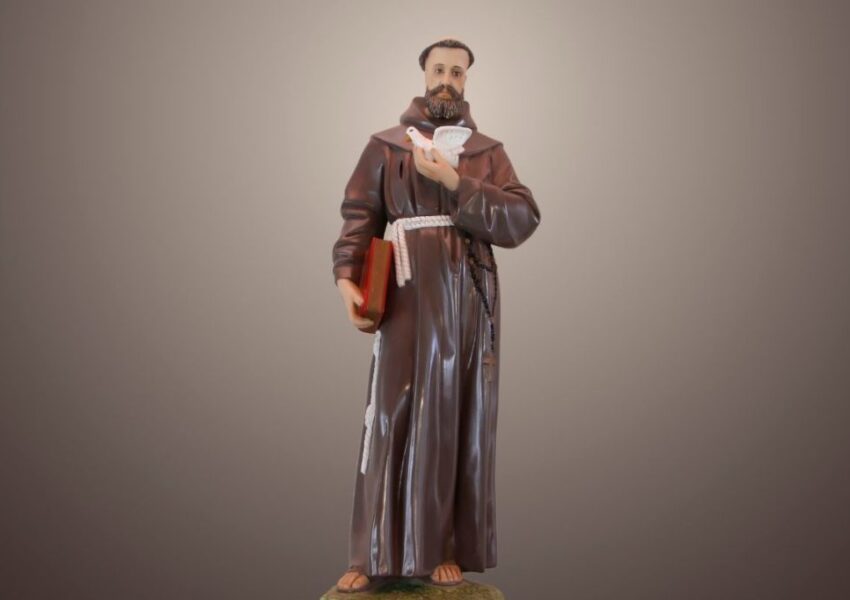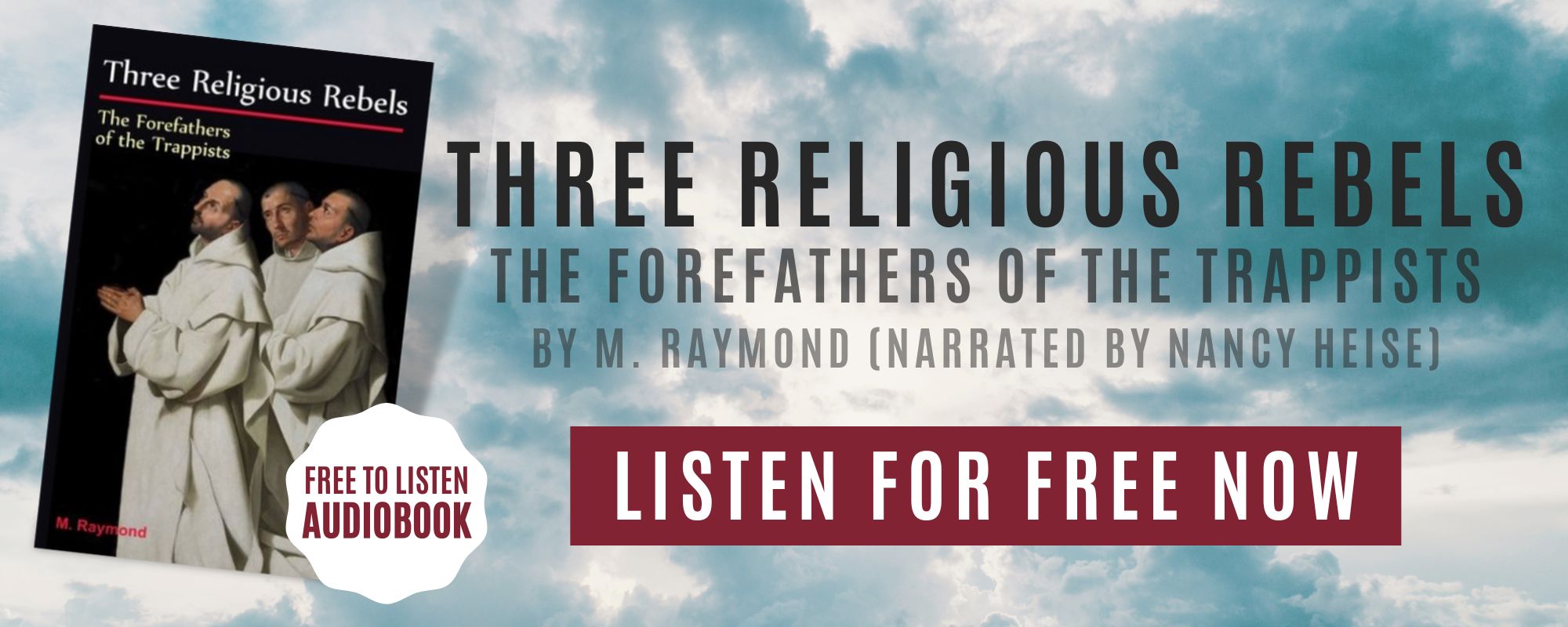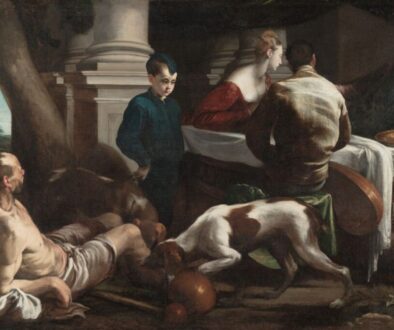Who is Saint Francis of Assisi?

Published April 22, 2022
Almost all Catholics are probably familiar with the song titled “Prayer of St. Francis”. It’s often sung in mass and other religious gatherings. But how about the man behind these iconic lyrics? Who is Saint Francis of Assisi?
A friar, deacon, and mystic, St. Francis of Assisi is one of the most venerated figures in the Roman Catholic church. He is best known as the founder of the Franciscan Orders and the women’s Order of St. Claire. Aside from being the patron saint of Italy, he is also considered the patron saint of animals and the natural environment.
Life of St. Francis of Assisi
Birth and Early Life
There is no exact record of St. Francis’ birth but tradition dictates that he was born anywhere from late 1181 to early 1182 in Assisi, a town in the Umbria region of Italy. His father was a wealthy cloth merchant and his mother was thought to be a French noblewoman.
Like many children born into wealth, Francis was indulged by his parents. As a result, he developed a taste for the finer things in life. He wore opulent clothes, spent money lavishly, and indulged in worldly pleasures.
But despite his lavish lifestyle, St. Francis’ compassion for the poor is evident even at an early age.
According to tradition, there was once a beggar who came to him while he was selling clothes and velvet in the marketplace. When he finished for the day, he left his wares and ran after the beggar. He then proceeded to give him all that he had in his pocket – to the utter rage of his father.
When he was around twenty, he joined a military expedition against Perugia, a city also in Umbria. It is there where he was captured and kept in captivity for a year. When he returned to Assisi, he also returned to his carefree ways.
Two years later, he joined a military campaign again and it’s there where his life will take a 360-degree turn.
The Turning Point
While serving on a military campaign in Apulia, Francis received a strange vision that made him lose interest in material pleasures. Upon returning to Assisi, he avoided festivities and the rich friends he used to hang out with. It’s also at this point that he starts contemplating about life.
Later on, he traveled to Rome on a pilgrimage where he joined the beggars outside St. Peter’s Basilica. He also spent some time in isolation where he begged God for spiritual enlightenment.
On his way back to Assisi, he spent some time in a dilapidated chapel of San Damiano. Here, he received another vision of a crucified Christ saying to him:
“Francis, Francis, go and repair My house which, as you can see, is falling into ruins.”
Since the San Damiano chapel has clearly seen better days, he took it to mean the church where he is currently in. So he sold some of his father’s inventories and gave the proceeds to the priest managing the said chapel. But the priest refused to accept the gold coins. Feeling insulted, Francis threw the coins onto the floor.
When his father heard about what he did, he dragged Francis home, beaten and bound. He also locked him in a small storeroom. His mother eventually freed him but his father, not content with beating and imprisoning him, decided to force Francis to renounce his inheritance which he readily agreed to.
After that, he spent the first few months wandering around the hills behind Assisi as a beggar. Eventually, he went back into the city and started begging for stones to restore St. Damiano’s chapel. He set these stones on the chapel himself and even helped restore several other chapels in the countryside.
While living as a beggar, Francis did not stop helping the poor. He also helped nurse lepers and even helped out in leper colonies.

Founding the Franciscan Orders
In February 1208, Francis heard a sermon about the commissioning of the twelve apostles. In Matthew’s gospel, it says that disciples should go and proclaim that the Kingdom of God is at hand.
From then, he decided to devote himself to a life of poverty. He started wearing a coarse woolen tunic tied with a rope around the waist. This is something commonly worn by the poorest peasants at that time.
Afterwards, he went around the countryside preaching to the people about penance, peace, and brotherly love. Since he wasn’t a priest or a monk, Francis’ preaching was unusual.
But soon, his example and earnestness earned him a few followers. They lived a simple life in a deserted leper colony. His followers also began to preach God’s message, particularly in the mountainous regions of Umbria.
Then, he led his followers to Rome where they asked permission from the Pope to found a new order. Though many of the Pope’s counselors considered Francis’ teachings and way of life impractical, he still decided to endorse Francis’ order.
On April 16, 1210, the Order of Friars Minor (more popularly known as the Franciscan Order) was formally founded. Francis was, later on, ordained as a deacon.
During his ministry, he founded a total of three orders: The Order of Friars Minor, the Order of St. Claire, and the Third Order of Saint Francis.
Ministry
After founding the Franciscan Orders, St. Francis continued with his ministry. He traveled all over Italy preaching his message of peace, tolerance, and denouncing worldly pleasures.
Seeking to share his message with the rest of the known world, he traveled outside Italy. He preached in Morocco, Spain, and Egypt where he is said to have met the Sultan.
At that time, the Crusaders had been besieging an Egyptian port city for over a year. Despite this, reports said that the Sultan received him graciously. It’s even said that the Sultan allowed him to preach to the Muslims.
After his time in Egypt, he traveled to Jerusalem where he received permission to preach from both the Pope and the ruling Sultan.
But as Francis was preaching in Jerusalem, the Franciscan Order continued to grow in Italy. Soon, there were Franciscans as far as Germany, Hungary, France, and Spain.
Because the order is growing more rapidly than expected, Francis had to stop his ministry in Jerusalem and return to Italy. There he reorganized the order and wrote a more detailed Rule. He also handed the reins of managing the order to the other members.
Final Days
When he was about 42 years old, St. Francis is said to have received another vision. According to a brother who was with him at that time, Saint Francis is said to have seen a seraph on a cross who gave him the gift of the five wounds of Christ.
A few days later, he developed stigmata. His travels also led him to develop an eye infection which made him almost totally blind and in constant pain. He received treatment in different cities but to no avail.
On the evening of October 3, 1226, St. Francis breathed his last in a small hut next to the Porziuncola.
Canonization
Nearly two years after his death, on July 16, 1228, Francis was officially proclaimed a saint by Pope Gregory IX. His feast day is observed every 4th of October. Though, in some traditions, a second feast in honor of his stigmata is celebrated every September 17.
In 1939, Pope Pius XII declared St. Francis the patron saint of Italy together with St. Catherine of Sienna. Because of his universal love for God’s creatures, Pope John Paul II also declared him the patron saint of ecology in 1979.
Legacy
Aside from the Franciscan Orders, St. Francis’ lasting legacy to the Catholic faith is his message of love for all of God’s creation.
In his Canticle of the Sun, he called the sun “Brother Sun” and the moon “Sister Moon”. He also thanked God for brother wind, fire, water, and earth. In some respects, it’s safe to say he was the original Earth Day advocate.
St. Francis’ love for animals and the environment is also a common theme in almost all stories about him.
One legend even said that St, Francis managed to broker a truce between a wolf and the inhabitants of a town called Gubbio. According to the legend, the wolf was terrorizing the townsfolk and devoured men and animals. St. Francis tamed the wolf and told the people that it only did what it did out of hunger. So if they were to feed the wolf regularly, it wouldn’t attack them anymore. The people did and the wolf never bothered them again.
His renunciation of material wealth, concern for the poor, and love for all of God’s creations make him a saint worth emulating.
Seek a Deeper Connection with God and Join Lay Cistercians of South Florida
Lay Cistercians of South Florida, is a community of lay people who seeks to have a deeper connection with God by living a life inspired by the monks and nuns through Lay Monasticism. Learn more about what is a Lay Cistercian on our website. Anyone who aspires to do the same as us, and is a confirmed Catholic is welcome to join us! We meet every second Saturday of the month at Emmanuel Catholic Church in Delray Beach, Florida.

This Content Has Been Reviewed For Accuracy
This content has undergone comprehensive fact-checking by our dedicated team of experts. Discover additional information about the rigorous editorial standards we adhere to on our website.

About The Author
Judy Ponio is a professional writer for the Lay Cistercians blog and a devoted Catholic. She works hard to ensure her work uses accurate facts by cross checking reputable sources.




